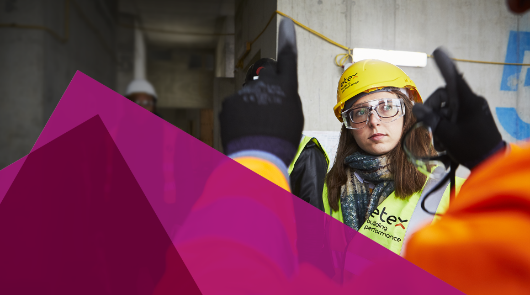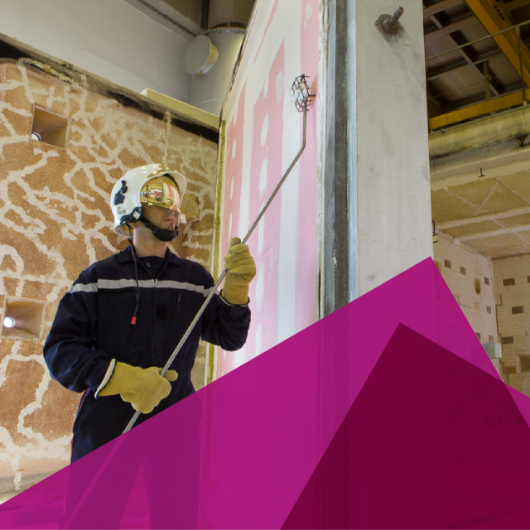If you have a general enquiry regarding Siniat products and systems, please complete the request form below.
What you need to know about EXAP
What is EXAP?
Put simply, EXAP stands for extended field of application. These are the only EN standards allowed to go beyond the fire test standard to extend the number of 3rd party approved applications.
Why EXAP and why now?
In 2018, the Hackitt report triggered changes to Approved Document B. The changes meant that products and systems for fire resistance are tested against EN standards; that only extended (EXAP) or direct (DIAP) application rules can be used to extend results; and that official classifications to EN 13501-2 should be provided. It also states that all these tasks need to be conducted by approved 3rd party bodies.
The strict extension rules in an EXAP standard mean that tough criteria must be met to increase height or change components.
How is EXAP Testing Carried Out?
The simplest way to look at the amendments to Approved Document B is that any fire-resisting element should be proven using EN standards, following the process of ‘test’, then ‘extend’, and then ‘classify’.
TEST - Testing must use the appropriate EN fire-testing standard.
EXTEND - Extension of test data to similar applications can be done, but only by qualified and approved third-party bodies using the test standard or extended application (EXAP) – and, critically, only where the standards explicitly allow it.
CLASSIFY - Finally, this evidence must be validated and summarised in an official third-party classification report.

Following this chain means that you are meeting Approved Document B and that everyone involved knows that the evidence is to a minimum standard of quality and verification.
How are Siniat ensuring partitions meet EXAP Standards?
As soon the Approved Document B changes were made, Siniat began a major investment in renewing and expanding our already extensive range of EN tests, commissioning 3rd party extensions using EXAP standards, to maximize design options and obtaining official classifications.

What if you don’t ask for EXAP classifications?
Demanding classification reports is crucial for ensuring that fire-safety standards are taken seriously. If contractors, architects and building control aren't requesting adequate fire-resistance information, it won’t become part of the project requirements and inevitably won't be supplied, potentially exposing the client, designers, and contractors to future issues.
How does EXAP help achieve the ‘Golden Thread'?
The building-safety regulations will soon stipulate a ‘golden thread’ of building-performance evidence, particularly around fire safety, stimulating a need for an up-to-date, easily accessible, and unbroken thread of information. EN and EXAP evidence ensures that fire-safety information is not only more robust, but is supplied in a clear and consistent format, enabling the golden thread to be achieved more easily across the industry.
Why does EXAP give you more confidence to design and build?
Here at Siniat we understand that many designers and contractors are increasingly concerned about liability for poor design and construction, with difficulties in securing insurance and long extensions to defect liability periods. Ensuring that you meet Approved Document B is the simplest way to mitigate these risks.

Why does Siniat see EXAP and classification as a ‘Minimum Standard’?
The updated guidelines in Approved Document B are more restrictive which demands extensive additional fire testing, extension, and classification. As a result, all manufacturers should be spending a significant amount of time, resource, and budget to carry out fire testing, EXAP extension, and classification, if they are serious about building safety.
There is some legacy recognition of the old BS standards to cover areas where EXAP standards don’t exist, but where the full process can be followed this must be the minimum standard, and that’s now the case for many drywall partitions.
It is imperative that clients, designers and building control seek 3rd party classification for their projects to mitigate concerns around liability and insurance.
At Siniat, we want to give additional confidence in the robustness of the fire compliance of drywall, which often represents the largest area of fire resisting elements in a building. So, we do not see the Approved Document B as a guide. We see it as a minimum standard.
How many Siniat partitions will be EN Classified?
Currently, we are on track for over 500 of our partition systems to be EN classified with 3rd party reports by January 2023.
